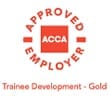
Cars and vans – What’s new for 2020/21
There are a number of changes that apply from the start of the 2020/21 tax year that relate to the taxation of company cars and vans.
New way of measuring CO2 emissions
The way in which the level of a car’s CO2 emissions is determined changes from 6 April 2020. The CO2 emissions figure for new cars registered on or after that date is determined in accordance with the Worldwide Harmonised Light Vehicle Test Procedure (WLTP). The CO2 emissions figure for cars registered before 6 April 2020 is determined in accordance with the New European Driving Cycle.
Different appropriate percentages
For 2020/21, it will be necessary to know whether a new Cars and vans were registered before 6 April 2020 or on or after that date in order to ascertain the correct appropriate percentage to use when calculating the company car benefit charge.
With the exception of zero emission cars and those with CO2 emissions of 170g/km and above, for 2020/21, the appropriate percentage for cars registered on or after 6 April 2020 whose CO2 emissions are determined in accordance with the WLTP is two percentage point lower than for a car with the same CO2 figure which was registered prior to 6 April 2020 and whose emissions are determined in accordance with the NEDC. This means, for example, that the appropriate percentage for a car with CO2 emissions of 100—104g/km is 23% where the car is registered on or after 6 April 2020 and 25% where the car is registered before that date. The maximum charge applies for cars registered prior to 6 April 2020 with CO2 emissions of 160g/km and over and to cars registered on or after 6 April 2020 with CO2 emissions of 170g/km and over. The 4% diesel supplement applies where diesel cars do not meet RDE2 standards, subject to the 37% maximum charge.
For 2021/22, the appropriate percentage for cars registered on or after 6 April 2020 will be one percentage point lower than those registered prior to that date. The figures are aligned from 2022/23.
Zero-emission cars and vans
The charge for zero emission cars is 0% for 2020/21, regardless of whether the car was registered before or after 6 April 2020. It will increase to 1% for 2021/22 and to 2% for 2022/23.
Cars in 1—50g/km
The appropriate percentage for cars in the 1—50g/km band also depends on the car’s electric range for 2020/21 onwards. This is the case regardless of whether the emissions are measured under the WLTP or the NEDC.
The 1—50g/km is split into five bands according to the car’s electric range (also referred to as its zero emission mileage). The bands are:
- more than 130 miles;
- 70 to 129 miles;
- 40 to 69 miles;
- 30 to 39 miles; and
- less than 30 miles.
The appropriate percentages range from 2% to 14% for cars registered before 6 April 2020 and from 0% to 12% for cars registered on or after this date, with lower percentages applying to cars with the greatest electric range.
Car fuel benefit
Where an employer provides, or meets the cost, of fuel for private motoring in a company car, a benefit in kind charge arises, found by multiplying the appropriate percentage by the multiplier for the year. For 2020/21, the car fuel multiplier is set at £24,500.
Vans
The flat rate van benefit in kind is set at £3,490 for 2020/21. The charge for zero-emission vans is 80% of the full charge, equivalent to £2,792. The fuel benefit charge where fuel is provided for private motoring in a company van is set at £666 for 2020/21.
The charge for zero-emission vans is to be reduced to nil from 2021/22.
For more information on taxation of company cars and vans, Book a Free Consultation
Need Accountancy Support?
For information on bespoke training, or if you have any other questions for Makesworth Accountant, please fill in your details below




















 148
148